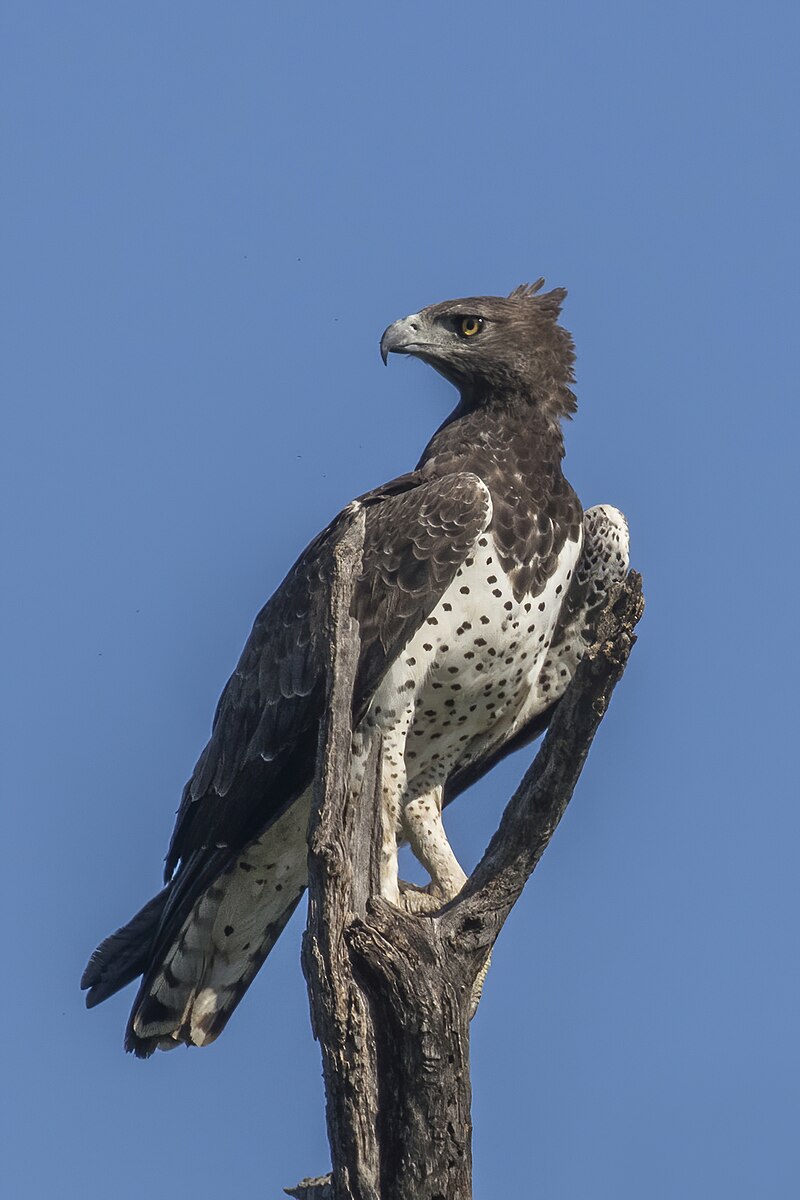The martial eagle (Polemaetus bellicosus) is a large bird of prey found throughout sub-Saharan Africa, with an average lifespan of approximately 12 to 14 years in the wild. However, the longevity record for a wild eagle of the species is now 31.4 years of age. These eagles are known to be quite long-lived, with an average lifespan estimated to be 12 to 14 years. The maximum lifespan for a martial eagle in the wild is estimated to be around 30 years.
The Average Lifespan of Martial Eagles
Martial eagles are known to have an average lifespan of 12 to 14 years in the wild. This is a relatively long lifespan compared to many other bird species. The factors that contribute to this impressive longevity include:
-
Prey Availability: Martial eagles are apex predators, feeding on a variety of small to medium-sized mammals, birds, and reptiles. Their access to a diverse and abundant food source helps sustain their health and longevity.
-
Predator Avoidance: As large and powerful birds of prey, martial eagles have few natural predators, allowing them to avoid threats and live longer lives.
-
Parental Care: Martial eagles invest a significant amount of time and energy into raising their young, which helps ensure the survival and development of their offspring, contributing to the overall population’s longevity.
Record-Breaking Lifespan of Martial Eagles
 Image source: Martial eagle by Charles J. Sharp
Image source: Martial eagle by Charles J. Sharp
While the average lifespan of martial eagles is 12 to 14 years, there have been exceptional cases of individuals living much longer. The longevity record for a wild martial eagle is an impressive 31.4 years of age. This remarkable feat is a testament to the resilience and adaptability of these magnificent birds.
Factors Influencing Martial Eagle Lifespan
Several factors can influence the lifespan of martial eagles, both in the wild and in captivity. These include:
-
Habitat and Environment: Martial eagles that live in protected, well-managed habitats with abundant prey and minimal human disturbance tend to have longer lifespans compared to those in areas with habitat degradation and human-wildlife conflicts.
-
Breeding and Reproduction: The reproductive success and parental care of martial eagles can impact their lifespan. Successful breeding and the rearing of healthy offspring can contribute to the longevity of these birds.
-
Threats and Challenges: Factors such as hunting, poisoning, collisions with power lines, and habitat loss can significantly reduce the lifespan of martial eagles, especially in areas where these threats are prevalent.
-
Captive Conditions: Martial eagles in captivity, when provided with optimal care, nutrition, and veterinary support, can potentially live longer than their wild counterparts, with some individuals reaching ages exceeding 30 years.
Martial Eagle Reproduction and Lifespan
Martial eagles are known for their long-term pair bonds and their relatively low reproductive rate. They typically lay one egg (rarely two) every two years, with the egg incubated for 45 to 53 days, mainly by the female. The female does a great majority of the incubation, as is typical, but the male may relieve her and incubate for a maximum of three hours in a day.
Once the eggs hatch, the male of a pair may rarely brood the young but has never been seen to feed the chick. The female’s attendance at the nest drops considerably at seven weeks after hatching, at which point she resumes hunting.
This low reproductive rate, coupled with the long parental care required for the young, can impact the overall population dynamics and lifespan of martial eagles.
Threats to Martial Eagle Lifespan
The main threats to the lifespan of martial eagles include:
-
Hunting and Persecution: Farmers often kill these birds because they perceive them as a threat to their livestock, leading to direct persecution and a reduction in their lifespan.
-
Habitat Loss: The destruction and fragmentation of the martial eagle’s natural habitat can limit their access to resources, leading to decreased survival and lifespan.
-
Poisoning and Collisions: Martial eagles are sometimes poisoned or killed by colliding with power lines, further reducing their lifespan.
-
Low Reproductive Rate: The martial eagle’s low reproductive rate, with only one or two eggs laid every two years, makes it challenging for the population to recover from losses, potentially impacting their long-term survival.
Conservation Efforts and the Future of Martial Eagles
Due to the various threats facing martial eagles, their population numbers have been declining in recent years. According to the IUCN Red List, the martial eagle is currently classified as Endangered (EN), with an estimated global population of around 30,000 individuals.
Conservation efforts are underway to protect these magnificent birds and ensure their long-term survival. These efforts include:
- Habitat preservation and restoration
- Reducing human-wildlife conflicts through education and mitigation strategies
- Enforcing anti-poaching and anti-poisoning laws
- Monitoring and research to better understand the species’ ecology and threats
By addressing the key threats to martial eagles and implementing effective conservation measures, we can help ensure that these impressive birds continue to thrive and maintain their remarkable lifespans in the wild.
References:
– Animal Diversity Web – Martial Eagle
– Wikipedia – Martial Eagle
– Animalia.bio – Martial Eagle
– Owlcation – Birds of Prey: The Martial Eagle
– Critter.Science – Africa’s Largest Eagle: The Martial Eagle

